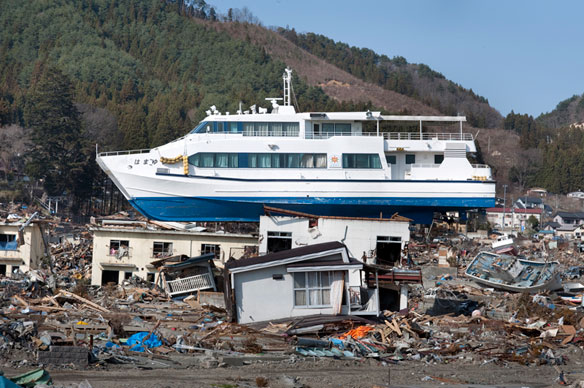
Post tsunami devastation, Japan 2011. Photograph courtesy © by Mark Edward Harris.
In geology, liquefaction refers to the process by which saturated, unconsolidated sediments, primarily sands and silts, temporarily lose strength and behave as a viscous liquid rather than as a solid. Ground failure caused by liquefaction is a major cause of earthquake damage and casualties.
Excerpts;
The scale of Japan’s March 11 earthquake and tsunami wasn’t the only thing that surprised geologists.
The 9.0 earthquake in Japan, the fourth most powerful quake ever recorded, also caused an unusually severe and widespread shift in soil through liquefaction, a new study suggests.
Near coastlines, harbors and rivers, earthquakes can make the wet, sandy soil jiggle, turning it temporarily from a solid to a liquid state, a process known as liquefaction. Heavy sand and rock sinks, while water and lighter sand bubble to the surface. The slurry spreads, often toward the water, and the surface shifts.
Japan’s liquefaction occurred over hundreds of miles, surprising even experienced engineers who are accustomed to seeing disaster sites, including from the recent earthquakes in Chile and New Zealand…








